Durham Cathedral's central tower re-opens to visitors following three years of reconstruction work on 1 June 2019.
To celebrate the re-opening, we've pulled together our favourite tower trivia facts.
How many will you know?
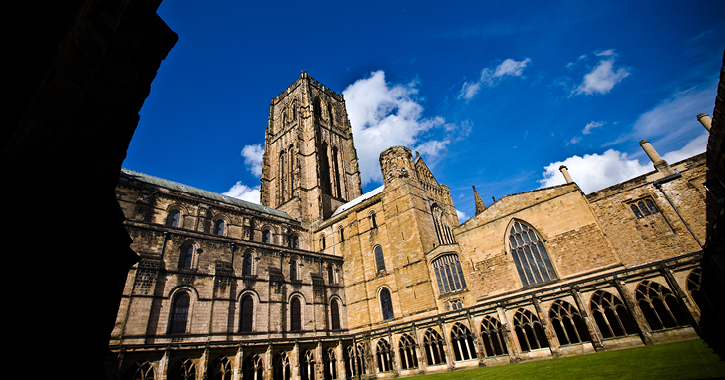
The current restoration work, which took place from 2016-2019 isn't the first time Durham Cathedral's central tower has been re-built.
The Romanesque tower was first rebuilt in the second half of the 13th century, but it was damaged when it was hit by lightning on 27 May 1429. Total reconstruction of the tower was necessary 30 years later, when the tower was once again hit by lightning on Easter Day, 1459. Ten years later, another level was added, presumably as an afterthought, and this is the 66m high central tower we know and love today.
The central tower was reconstructed in two stages, in the late 15th or early 16th century, including the creation of a top belfry. Thomas Barton was thought to be the master mason in charge of building the new lower stage, with John Bell thought to be the master mason responsible for constructing the upper level, having been appointed mason for life to the Prior and Chapter in 1488.
Due to gradual weathering of the sandstone, it was rendered with a special Roman cement by Francis Bernasconi (who had carried works in Buckingham Palace, Windsor Castle etc.) between 1804 and 1809.
Repairs also took place between 1859 and 1861 as George Gilbert Scott (Who the Scott Screen in the cathedral’s crossing is named after), the Architect to the Dean and Chapter, identified the parapet as being loose. A new parapet was erected by Thomas Winter, a Durham builder and mason, who used a steam engine to operate a cage to raise men and materials up the tower to the working platforms.
Apart from some minor restoration work in the 1960’s no other major work has been carried out on the tower until the current project got underway in 2016.
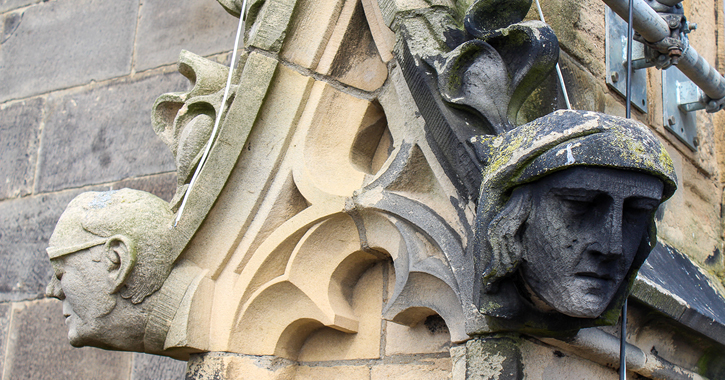
The past three years have seen up to eight in-house stonemasons, working alongside the cathedral’s architect from Purcell UK and the scaffolding contractor, Wood Group, to restore the interior and exterior of the tower.
The work has involved:
• Rebuilding the upper parapet
• Replacing the old iron railings from the Victorian era with new bronze railings.
• Replacing the decking walk ways with a new visitor viewing platform
• Re-bedding the replacement ‘blaxter sandstone’ (chosen because of its close geological profile to the existing ‘prudham stone’) on traditional lime-based mortar.
• Repairing the tower’s led roof
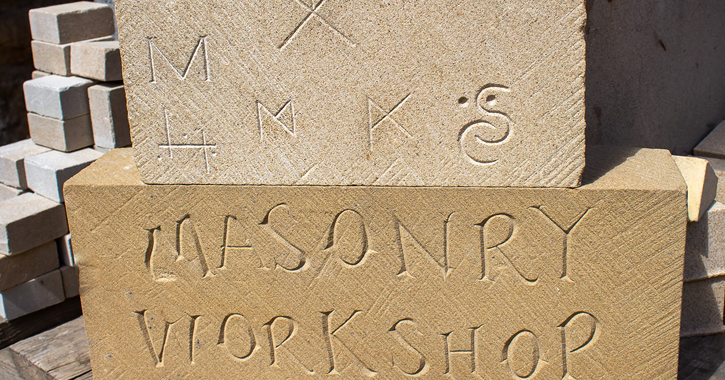
Mason marks are included on every stone as an indicator of each mason’s work.
Historically this was done to calculate the salary each mason would get, depending on how many stones they had successfully carved. Whilst not associated with pay anymore, the tradition lives on, as shown in the image above.
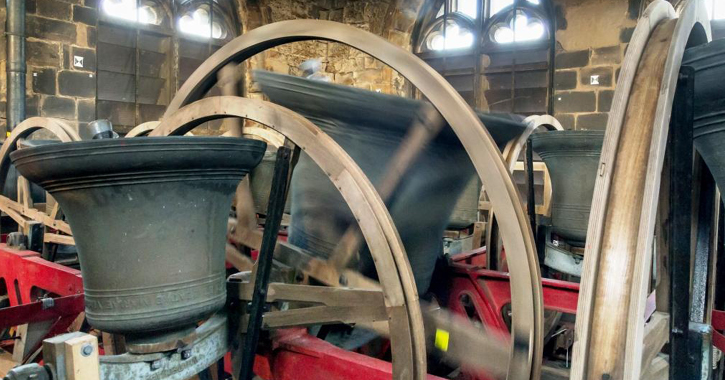
The main central tower houses a variety of bells of different size and mass.
The tower has a ring of ten bells with a total mass of 6.4 tons. Amazingly, measurements in 1993 suggested a minimal displacement of the tower of just 0.43 millimetres during ringing.
The heaviest, tenor bell has a mass of 1400kg. The bells are supported on bearings and each can be swung through a vertical arc of 360°, some in a North-South direction and others in the East-West plane.
.jpg)
The journey to the top of the tower consists of over 325 steps.
The 360-degree view from the central tower is astonishing featuring Durham Castle and university buildings, Durham City, the wooden loop of the River Wear and further afield across the surrounding countryside.
The cathedral’s central tower plays a vital role to its visibility. The 66m structure, coupled with the two western towers are the only features that make the cathedral identifiable from afar. Without the towers, the church that is surrounded by rising land would be hidden from view.
The central tower is 218ft, or 66m in height and the crown of the tower vault is 155ft high, with the ringing chamber and belfry nestled above.
The details of the central tower are very much in keeping with the gothic tradition, however the tower's square shape allows it to fit well amongst the two older towers to its west side.
Durham Cathedral’s central tower bares similarities to York Minster both internally and externally. Both bare narrow vertical bands of tabernacles that frame the two windows on each side. Inside, the decorative arcading of Durham Cathedral’s lantern also resembles that of York.
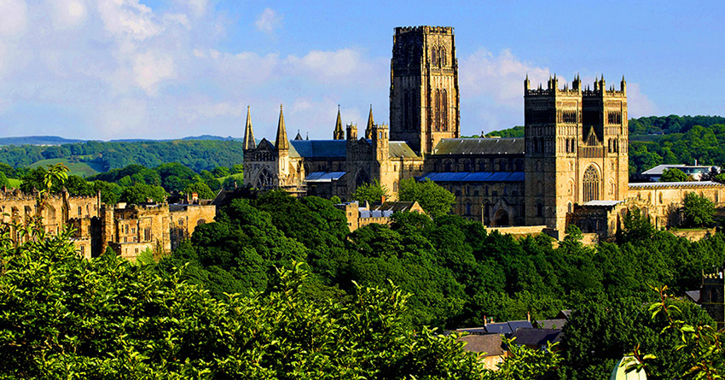
Medieval sources mention that in 1346 the monks of Durham watched the Battle of Neville’s Cross from the top of the central tower, and started to sing with joy when they saw that the Scots had been defeated.
For many years after that, on October 17th, the anniversary of the battle, a group of monks would climb up the tower and sing three anthems, one to the north, one to the south and one to the east. (The west, being the direction of the battle, was not sung to).
Durham Cathedral’s central tower reopens to the public on 1 June 2019 at 10am.
Are you ready to take on the 325-step climb to take in the unrivalled views of Durham City from the top of the tower?
Tickets are available from the visitor desk at the west end of the cathedral - £5 per adult and £2.50 per child (8-17 years).
Related
Comments
Comments are disabled for this post.



 to add an item to your Itinerary basket.
to add an item to your Itinerary basket.
.png)





